|
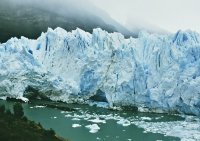 Hypothermia
is a dangerous condition and is often accompanied by
mental confusion where the person affected does not realise
what is happening preventing them from seeking help. Extreme
hypothermia can lead to death in just a few hours. Hypothermia
is a dangerous condition and is often accompanied by
mental confusion where the person affected does not realise
what is happening preventing them from seeking help. Extreme
hypothermia can lead to death in just a few hours.
Prevention of hypothermia is achieved by the use
of appropriate clothing including hat, gloves/mittens, suitable
socks and boots. There is an abundance of excellent protective
clothing available for outdoor enthusiasts. Specialist advice
should be sought as to the best equipment for a trip, including
survival equipment. Loss of articles of clothing in an accident
can be disastrous unless spares are carried.
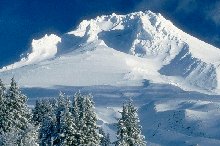
Symptoms of Hypothermia include:
-
Uncontrolled
shivering followed by
-
Confusion
& dizziness
-
Slow,
clumsy movements and difficulty in walking
-
The
person feels tired
-
Breathing
becomes shallow and pulse becomes slow
-
Loss
of consciousness
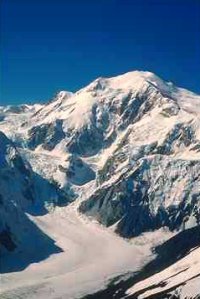 Treatment
of someone suffering from hypothermia entails preventing
any further drop in body temperature. This involves seeking
shelter, insulating and protecting them from the cold environment.
Replace any wet clothing with dry ones. Make sure the head,
feet and hands are covered. Place the person in a sleeping
bag with another person. Give them warm drinks and high energy
foods (sweets, chocolate etc.) Avoid rapid re-warming unless
the victim is well and conscious. Treatment
of someone suffering from hypothermia entails preventing
any further drop in body temperature. This involves seeking
shelter, insulating and protecting them from the cold environment.
Replace any wet clothing with dry ones. Make sure the head,
feet and hands are covered. Place the person in a sleeping
bag with another person. Give them warm drinks and high energy
foods (sweets, chocolate etc.) Avoid rapid re-warming unless
the victim is well and conscious.
Chilblains (non-freezing cold injury) occur in cold,
damp conditions where the hands and feet are cold (and generally
wet) for extended periods. They are characterised by itchy
or painful swellings that can lead to open sores if left untreated.
Frostbite is freezing of the skin and surrounding tissues
and can occur in anyone exposed to temperatures below freezing
without adequate protection. Frostbite should never be defrosted
if there is a likelihood of re-freezing as this will greatly
exacerbate the problem.
Prevention of these conditions is achieved by maintaining
adequate insulation from the cold by the use of appropriate
clothing, keeping the extremities warm and dry and by consuming
high energy foods and warm drinks.
Being attentive to early signs and symptoms is important.
If frostbite is suspected the casualty should be referred
for medical help as soon as possible.
In
all suspected cases of exposure to a cold environment:- AVOID
ALCOHOL
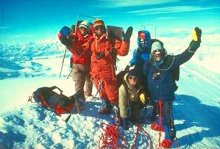 ALTITUDE ALTITUDE
The
problems associated with high altitude are usually only manifest
in people who have been to altitudes in excess of 3,000 metres
(10,000 feet).
The main concerns associated with high altitude include:-
Cold:
is a factor generally experienced at altitude. As a rule,
the higher you climb, the colder it gets. The risks and precautions
that need to be taken with regard to the cold are covered
in the previous section.
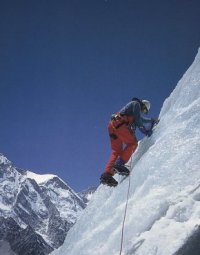 Dehydration:
It is very easy to become dehydrated at high altitude due
to the dryness of the air and by water loss in sweat caused
by exertion. In order to prevent dehydration, it is important
that you drink as much fluid as you can while in the mountains,
(about 3 litres per day). The best way to determine if you
are getting enough fluid is by urine output. It should be
colourless or pale yellow. If it is bright yellow or orange,
you are not drinking enough. Dehydration:
It is very easy to become dehydrated at high altitude due
to the dryness of the air and by water loss in sweat caused
by exertion. In order to prevent dehydration, it is important
that you drink as much fluid as you can while in the mountains,
(about 3 litres per day). The best way to determine if you
are getting enough fluid is by urine output. It should be
colourless or pale yellow. If it is bright yellow or orange,
you are not drinking enough.
Sunburn: At higher altitudes
the sun's harmful ultraviolet rays are more concentrated.
You must protect yourself against these rays by using sunscreens
or sun blocks. You can also use hats, scarves and masks to
protect your face and neck. Remember, even if it is not hot,
you can get severely burned. For more information, see the
section on exposure to the sun.
Snow blindness: Snow and ice
both reflect ultraviolet rays. These rays can damage your
eyes causing pain, watering and swelling and an intolerance
to light. This condition is known as snow blindness and can
be very painful. Fortunately it is short lived and recovery
is usually complete after a few days. It can prevented by
using adequate protection such as sun glasses or goggles.
|
The
Golden Rules of
Altitude Sickness
|
- It
is OK to get altitude sickness but it is not OK to
die from it.
- Any
illness at altitude is altitude illness unless proven
otherwise.
- Never
ascend with symptoms of AMS.
- If
you are getting worse, go down at once.
- Never
leave someone with AMS alone.
|
Acute
mountain sickness (AMS)
is the term used to describe the most common symptoms which
include; headache, nausea, dizziness, loss of appetite, vomiting
and insomnia. If these symptoms are ignored and the affected
person continues to ascend, more serious conditions such as
High Altitude Cerebral and/or Pulmonary Oedema (HACO &
HAPO) both of which are life threatening can result.
 Avoidance
of mountain sickness is best Avoidance
of mountain sickness is best
achieved by a slow ascent and by maximising
the opportunities to acclimatise.
The appearance of any of the above symptoms should prompt
consideration of a descent, or at least the decision not to
go any higher until they resolve.
Continued symptoms should result in a shift to a lower altitude.
By spending the night at a lower altitude than the highest
attained during the day is helpful - Climb High Sleep Low.
Prophylactic acetazolamide has been effective in preventing
altitude sickness in susceptible travellers, or when time
for natural acclimatisation is limited but it does not protect
against cerebral or pulmonary oedema.
Preventing
Acute Mountain Sickness
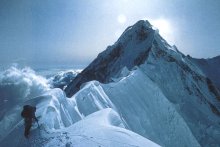 Acute
mountain sickness is caused by
a lack of oxygen when travelling to higher elevations. This
usually occurs in individuals exposed to an altitude over
7,000 feet (2,100 m) who have not had a chance to acclimate
to the altitude before engaging in physical activities. Acute
mountain sickness is caused by
a lack of oxygen when travelling to higher elevations. This
usually occurs in individuals exposed to an altitude over
7,000 feet (2,100 m) who have not had a chance to acclimate
to the altitude before engaging in physical activities.
Mountain climbers, trekkers, skiers, and travellers to the
Andes or Himalayas are at greatest risk. While individual
tolerance varies, symptoms usually appear in several hours,
with those in poor physical condition being most susceptible.
Headache, fatigue, shortness of breath, nausea, and poor
appetite occur initially. Inability to sleep is also frequently
reported. In more severe cases thinking and judgement may
become impaired. An uncommon but potentially fatal complication
called high altitude pulmonary oedema, caused by fluid build-up
in the lungs, can also occur.
The symptoms of acute mountain sickness can be prevented
or minimised by gradually ascending (less than 500 meters/day)
over several days to give your body a chance to acclimatise
to the higher altitude. Once symptoms occur, they usually
improve over several days without treatment. However, if
they become severe, they can be relieved with the administration
of oxygen or descent to a lower altitude.
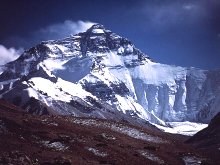 Acetazolamide
(Diamox) allows your body to metabolise more oxygen, thereby
minimising the symptoms caused by poor oxygenation. This
is especially helpful at night when the respiratory drive
is decreased. Acetazolamide
(Diamox) allows your body to metabolise more oxygen, thereby
minimising the symptoms caused by poor oxygenation. This
is especially helpful at night when the respiratory drive
is decreased.
It is advisable to start taking it 24 to 48 hours before
you go to altitude and to continue treatment while ascending
until you have fully acclimatised to your final altitude.
The recommended dose is 250mg (one tablet) twice a day when
required.
Possible side effects include tingling of the lips and fingertips,
blurring of vision, and alteration of taste. People with
a known allergy to it should not take it.
Acetazolamide (Diamox) is a prescription only drug so you
need to contact your doctor for a prescription to obtain
it.
Please
Note: There is NO substitute for proper acclimatisation!!
|
Note
on Lariam and altitude
|
Lariam
(mefloquine) is an anti-malarial drug used in areas
where resistance has developed to chloroquine. Sometimes
travellers intending to climb to altitude must pass
through such areas e.g. Kilimanjaro which is located
in Tanzania.
Because of certain properties of lariam it is now contraindicated
in people travelling to high altitude. Apart from predisposing
people to mountain sickness, some of the side effects
actually mimic the symptoms of mountain sickness and
therefore make diagnosis difficult. |
|